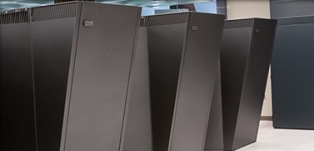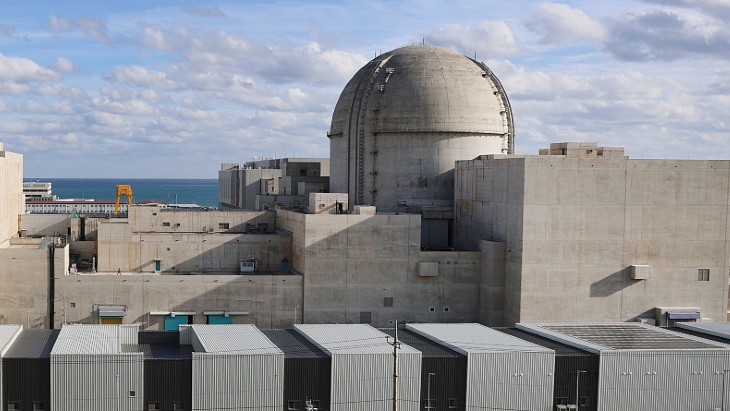Research institutes in New York state will use supercomputers to simulate the workings of next-generation nuclear power plants in a project funded by the US Department of Energy (DoE) under the Nuclear Energy Research Initiative (NERI) program.
 Rensselaer Polytechnic Institute is leading the $3 million, three-year research project - titled "Deployment of a Suite of High Performance Computational Tools for Multiscale Multiphysics Simulation of Generation-IV Reactors" - to develop highly detailed virtual models for a proposed sodium-cooled fast reactor (SFR). These models could play a key role in the future development of the reactor, which would meet stringent safety and non-proliferation criteria, could burn long-lived and highly radioactive materials, and could operate over a long time without using new fuel. The reactor could also be used for the production of hydrogen.
Rensselaer Polytechnic Institute is leading the $3 million, three-year research project - titled "Deployment of a Suite of High Performance Computational Tools for Multiscale Multiphysics Simulation of Generation-IV Reactors" - to develop highly detailed virtual models for a proposed sodium-cooled fast reactor (SFR). These models could play a key role in the future development of the reactor, which would meet stringent safety and non-proliferation criteria, could burn long-lived and highly radioactive materials, and could operate over a long time without using new fuel. The reactor could also be used for the production of hydrogen.
Running simulations of such a vast virtual model, where scientists can watch the reactor system perform as a whole or zoom in to focus on the interaction of individual molecules, requires unprecedented computing power. To undertake such a task, researchers will use both Rensselaer's Computational Centre for Nanotechnology Innovations (CCNI) and Brookhaven National Laboratory's (BNL's) New York Blue. The two supercomputers will be run in parallel.
Along with Rensselaer and BNL, the partnership includes researchers from Columbia University and the State University of New York at Stony Brook, as well as computer giant IBM, the maker of Blue Gene supercomputers. The company developed, designed, and built both CCNI and New York Blue.
"The idea is to design reactors that can use this material [used nuclear fuel] and that are safe," said Rensselaer's Professor Michael Podowski, project director and principal investigator of the new study. He added, "With this project, we are trying to improve the understanding of the physics of the system in order to provide the necessary advancements for the design of new, safer, and better reactors."
Podowski will lead a team of ten researchers who will construct a detailed computer model of an SFR by developing and deploying a suite of powerful, high-performance software tools. Since no one computer code or technology is robust enough to model the wide variety of systems that comprise an SFR, the team will use different computer codes for different parts of the model and then develop new ways of linking those differently coded segments together into a single, cohesive, seamless package.
The researchers will use simulations to study fuel performance, local core degradation, fuel particle transport, and several other aspects of the SFR. By better understanding how design and operational issues will affect the reactor at different stages in its life cycle, Podowski said, the new study will help to dramatically improve the design and safety of SFRs long before the first physical prototype is ever built.
Podowski said that the project offers a chance to "prove and show the new limits of computational simulation techniques to show if and how one can use computers to predict the behaviour and response of reactor systems in an efficient and accurate manner."
"Nuclear reactors are safe, but nothing is perfect," Podowski said. "So the issue is to anticipate what could happen, understand how it could happen, and then take actions to both prevent it from happening and, in the extremely unlikely instance of an accident, be able to mitigate the consequences."
Rensselaer's CCNI was officially opened on 7 September. It is a result of a $100 million partnership involving Rensselaer, IBM and New York state. The CCNI system is made up of massively parallel Blue Gene supercomputers, POWER-based Linux clusters, and AMD Opteron processor-based clusters, providing more than 100 teraflops (trillion floating point operations per second) of computing power. The system was recently ranked seventh most powerful in the world.
The DoE announced on 30 August the selection of 11 US university-led grant recipient teams for cooperative research projects under its Nuclear Energy Research Initiative (NERI) for up to $30.7 million over three years. The Rensselaer project was included among these. NERI is a DoE initiative focused on developing advanced nuclear energy systems and providing state-of-the-art research concerning nuclear science and technology. The DoE said the grants "further engage US university professors and their students in advanced nuclear fuel cycle research and development, supporting President Bush's Global Nuclear Energy Partnership (GNEP) and his American Competitiveness Initiative (ACI)."
Further information
Brookhaven National Laboratory
Columbia University
IBM
Rensselaer Polytechnic Institute
Stony Brook University
WNA's Advanced Nuclear Power Reactors information paper
WNA's Safety of Nuclear Power Reactors information paper




_72306.jpg)


_49562.jpg)





